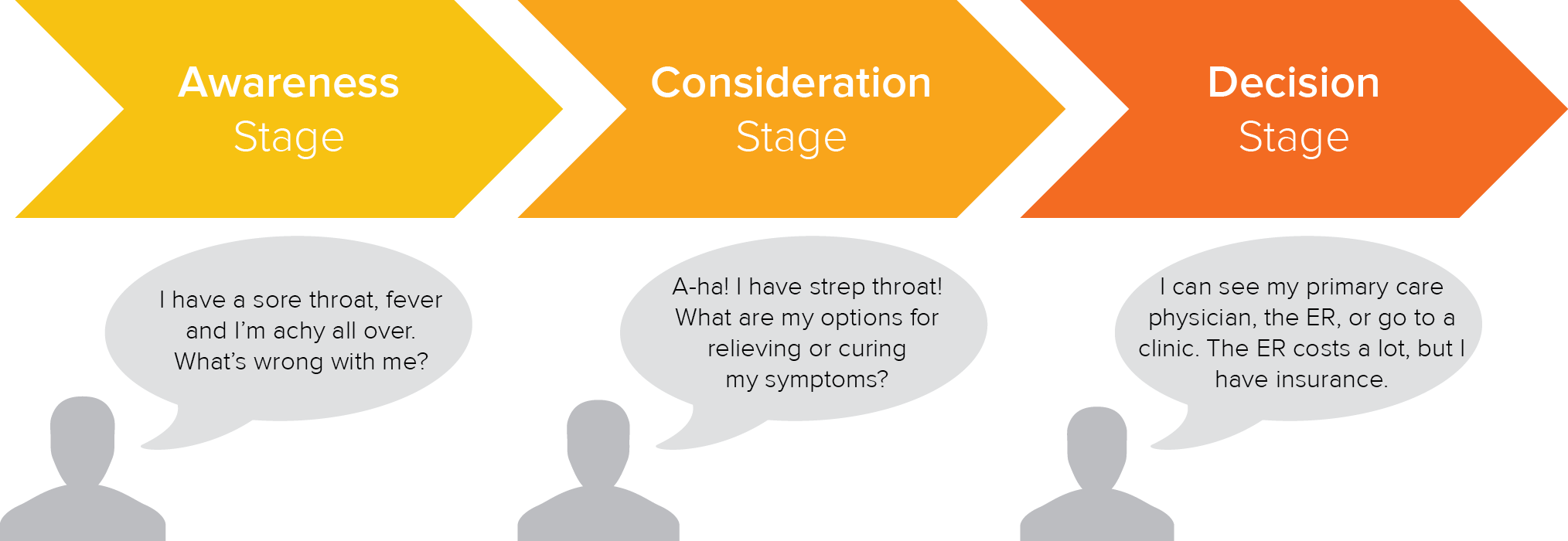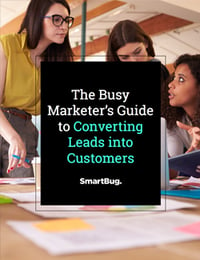
How to Incorporate Consideration and Decision Stage Content Into Your Site
June 5, 2018
By Mike Wolfe
Incorporating new content into your existing website isn’t complicated. However, with careful consideration and planning, your new content can be optimized for greater success by delivering exactly what your audience needs, when it needs it.
What is Consideration and Decision Stage Content?
Before you can successfully incorporate consideration and decision stage content into your site, you must understand how one is different from the other, and how they both fit into the Buyer’s Journey. The Buyer’s Journey is the path buyers take to make a purchase decision, and there are three stages: awareness, consideration, and decision.

When potential buyers are in the awareness stage, they are just starting to realize and research symptoms of a particular problem. When potential buyers are in the consideration stage, they have clearly identified a problem and are considering different methods of resolving it. Finally, in the decision stage, a potential buyer is ready to evaluate specific solutions, like the products or services that you offer, and compare them to others. Delivering decision stage content to your audience before it is interested in reading it likely will get you ignored.
What does all of this have to do with your website? The Buyer’s Journey, and the stages associated with it, is important when it comes to your website because every potential buyer who visits your website falls into the awareness, consideration, or decision stage. No matter what stage they are in, you want to present visitors with the right helpful information at the right time in their journey. Not only will this establish your brand as a helpful resource for your audience, but it also will educate potential buyers on the solutions available and move them closer to making a purchase. Learn more about the Buyer’s Journey here.
Incorporating New Content into Your Existing Site
How do you incorporate new consideration and decision stage content into your existing site? First, identify missed opportunities in your content strategy through which you can help your buyer personas evaluate solutions. Next, create your new content offer and strategically promote it throughout your site. Finally, monitor the results of your new offer to determine if your audience found it to be valuable. Then repeat.
Identify What’s Missing
Perform an audit on your existing content to uncover new areas in which you can help your personas evaluate solutions in depth and compare your products or services with competitors. Start with common pain points, questions, and goals that your personas have, and list potential topic ideas. A checklist or comparison white paper can be a good option for helping personas when it comes to comparing solutions. In addition to new written content ideas, consider offers that aren’t necessarily written content, such as cost calculators, demos, free trials, and simple contact forms through which site visitors can get in touch with your team to ask questions.
Here are a few general content ideas and the stages they typically fall in:
Consideration Stage
- Product comparison guides
- Live interactions (webinars, podcasts, live video)
- Case studies
- Product or service FAQs
- Data sheets
- Industry reports
- Cost calculators
Decision Stage
- Vendor comparison guides
- Product demos
- Free trials
- Contact forms
- Audits or consultations
Note: While there may be overlap in the types of content offered in each stage, consideration stage content tends to compare product or service types in general and decision stage content focuses more on your specific product or service.
Create Your Offer
Once you have topics to cover, and have determined the best format to present them in, create your content. Do your research and gather helpful information from trusted third parties such as industry publications, and remember to cite those sources. Also, don’t forget to incorporate keywords. Find out the long-tail keywords your personas are searching for specifically, and optimize your content around those phrases.
Create Your Conversion Path
Now that you have identified topics that will resonate with your buyer persona and created an offer, you need to create a conversion path—the path that website visitors will take as they convert into leads—for that offer. A typical conversion path will consist of a call to action, landing page, thank-you page, and follow-up email. As you write copy for the conversion path, draw upon the questions and pain points you identified earlier and use that information to describe your new content as the answer your audience is looking for. Then, of course, deliver on that promise with truly helpful information.
Place Your Content Throughout the Site
Now that you have consideration and decision stage content, you want to place it strategically throughout your website so that site visitors who fall within these Buyer’s Journey stages always have a clear next step to take—whether it is to compare products, download a case study, or sign up for an upcoming webinar. Start with the pages your website traffic is visiting the most, which likely will be your homepage and your blog, and place calls to action somewhere on the page. Common locations for calls to action are on sidebars, in the middle of the page as inline text, or at the bottom of the page. Proceed to place calls to action across your site so that no page is a dead end and that visitors are always given a direction.
What if a site visitor isn’t ready for consideration or decision stage content? If you’re using an automation platform such as HubSpot, smart content can be used to deliver a personalized experience for each visitor based on the stage in the Buyer’s Journey. If you don’t have the ability to create smart content, consider the contents of each page and the intent visitors have when visiting that page to determine the appropriate call to action you should place there. For example, if someone is visiting a pricing page on your site, he or she might be interested in a demo or a free trial as a next step. Someone who is on your blog reading a consideration stage article may be more interested in downloading a product comparison guide or signing up for a webinar related to the topic.
Monitor Results
Finally, as you place new content on your site, it is important to monitor its performance over time to determine how impactful it is in helping you achieve your marketing goals. First, look at the amount of traffic going to each offer to ensure that it is being promoted properly. Next, look at the conversion rate of the offer (if applicable) to see if visitors who see the offer are converting on it. If conversions are low, try tweaking the call to action or landing page copy to see if you can improve results.
Repeat
Placing content on your site and monitoring its success should be an evergreen process during which you are constantly performing A/B tests and tweaking for improved performance. As you discover which topics or specific pieces of content resonate, it will shed light on new opportunities for content that will help your personas overcome their challenges and help you establish your brand as a partner in their success.
Ready to learn more about how to convert your leads into customers? Download The Busy Marketer’s Guide to Converting Leads into Customers.

About the author
Mike Wolfe is a Project Strategist at SmartBug Media helping clients find success through inbound marketing. Read more articles by Mike Wolfe.







